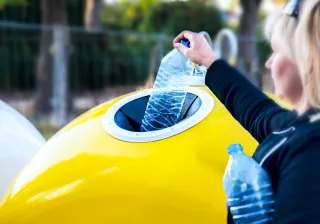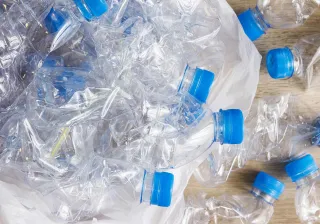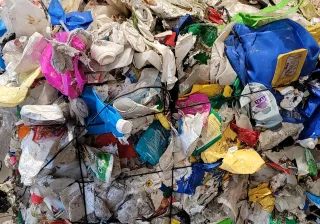Plastic waste is still an untapped resource for oil industry. Although plastic packaging waste recycling rate in Europe is already nearly 40%, we must look for new alternatives in recycling. Utilising chemical recycling methods such as pyrolysis and gasification could rise the recycling rate and create a new feedstock base for oil industry.
Senior Scientist Muhammad Saad Qureshi from VTT points out that in Europe approximately 30 million tons of post-consumer plastic waste was collected in 2018, of which 12 million tons were used for energy recovery and approximately 7.2 million tons were landfilled. “Ideally, the plastic we landfilled or burned could be used as feedstock for the industry to make various products,” he says.
The potential for recycling is much bigger. In 2018, In Europe, plastics production almost reached 62 million tonnes. Tuulamari Helaja, Lead, Circular Plastics at VTT, agrees that all suitable plastic waste should be utilised, in one way or the other. “For the oil industry, the use of plastic waste as an alternative feedstock represents a new business,” Helaja says.
Going circular
From a chemical point of view, plastics are a good raw material base for oil and petrochemical industries. “By its principle qualities, plastic is like oil, but more environmentally sustainable than crude oil,” says Principal Scientist Matti Nieminen from VTT. During plastics pyrolysis, remaining impurities are removed from the plastics and the resulting oil can be used as feedstock at oil refineries.
Pyrolysis involves using heat and anoxic conditions to break down plastic waste into compounds composed of smaller molecules, yielding valuable hydrocarbons in the form of liquids, waxes and gases. The end products of pyrolysis can be monomers, heating oils, refinery feeds, transportation fuels, and chemicals.
The second method of chemical recycling is gasification. It is a process that converts carbonaceous materials into gases. The main product of gasification is synthesis gas (syngas, CO and H2) which can be further processed into a variety of final products like gasoline, diesel, methanol, and synthetic methane chemicals
Wanted: Flexibility & integration
Chemical recycling can be used for mixed post-consumer plastic waste streams, for which further sorting is not economical. “What is significant here is that pyrolysis is a very flexible method which allows the use of variety of feedstocks,” says Senior Principal Scientist Anja Oasmaa from VTT.
What can one do to optimize the whole value chain from waste to products? First and foremost, the efficiency of collection, monitoring, and sorting needs to be improved to produce more suitable feeds to target products. For the best results, a holistic approach, which combines mechanical and chemical recycling, should be applied. “The target should be the integration of mechanical and chemical recycling methods,” says Oasmaa.
Push for industrial scale
However, for plastic waste-based pyrolysis products to become a reality in industrial scale, ardent development in technologies, value chains, and supporting legislation is needed.
Despite these hurdles, the missing links in the plastic recycling loop can be addressed and eventually fixed to establish an actual circular economy for plastics. “Circular economy is one of the drivers boosting chemical recycling,” says Qureshi.
Oasmaa points out that the circular economy is dictating, more and more, the reuse of waste materials. “Chemical recycling, such as pyrolysis, is therefore needed, but legislative issues pose the biggest challenges for this development moving forward.”
VTT has comprehensive experience in developing technologies for alternative fuels. Order a white paper where we tell more about our offering.
This blog was originally published in 2021 and revised in 2023.







